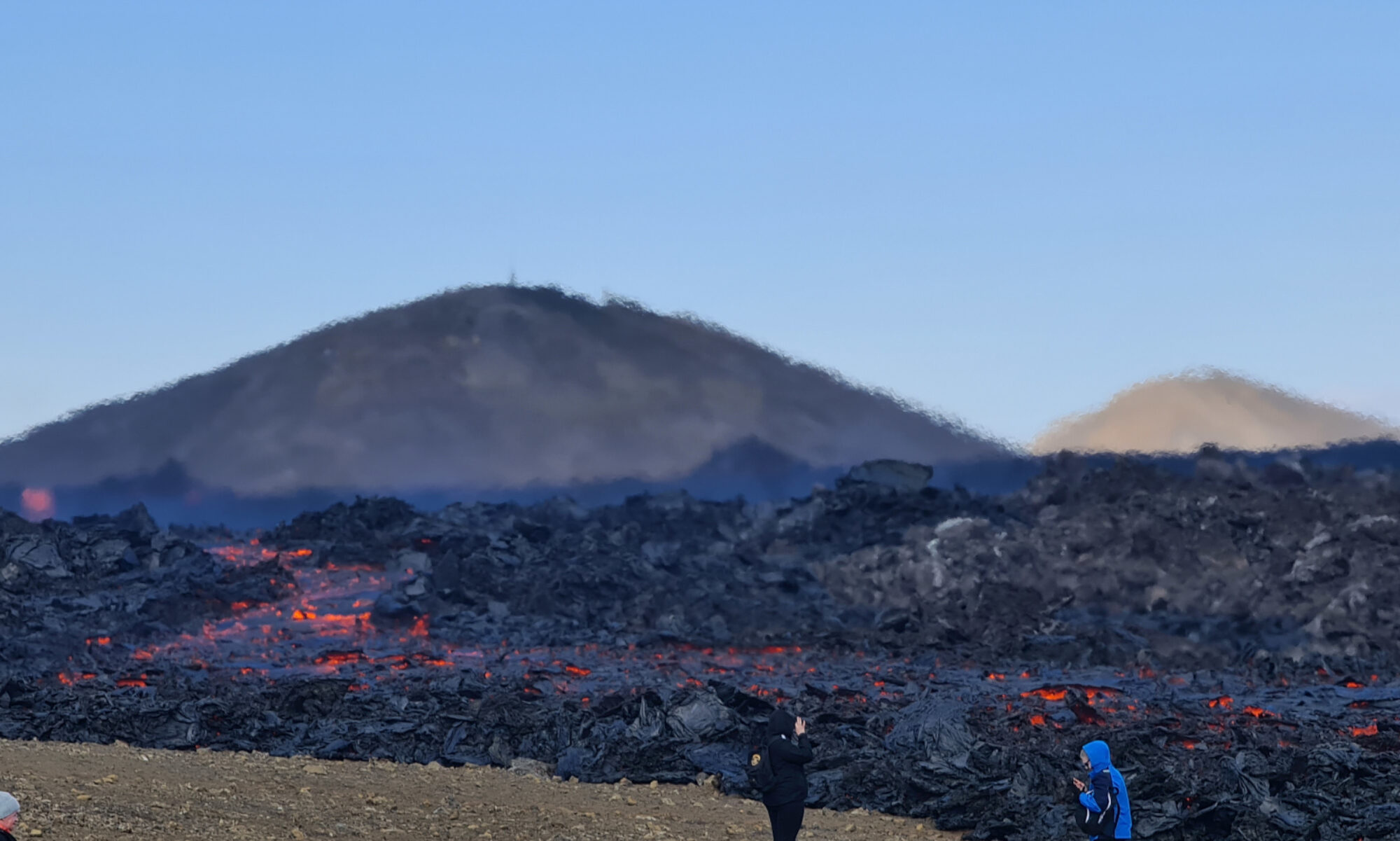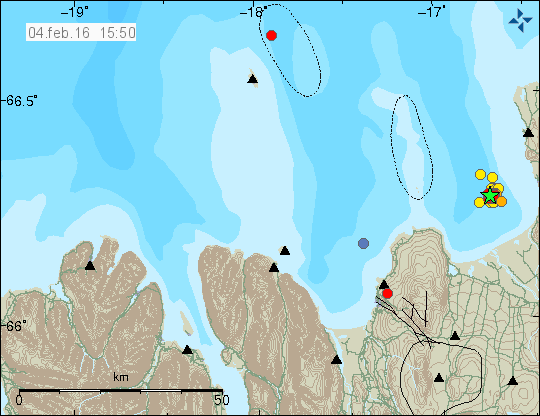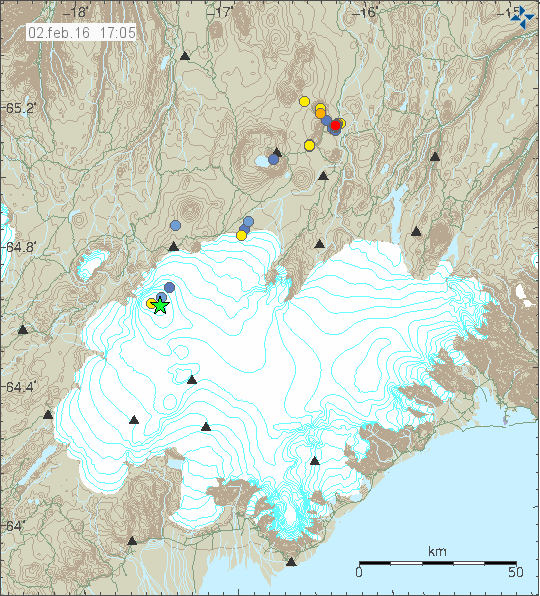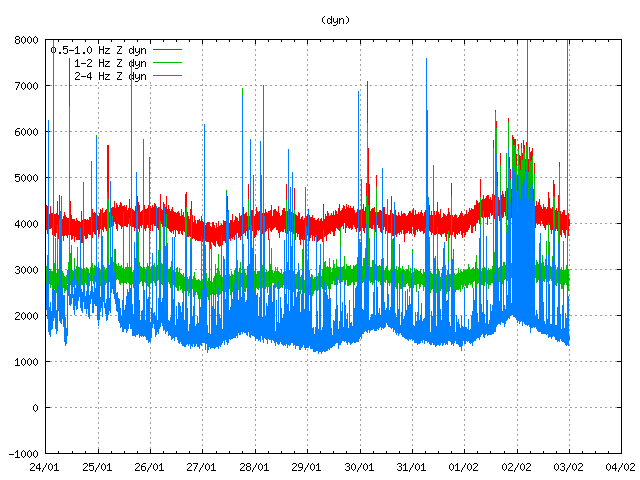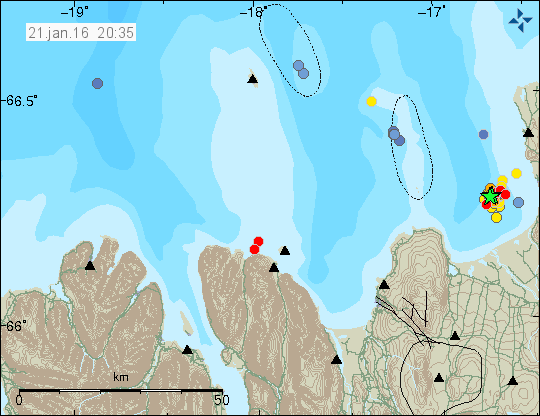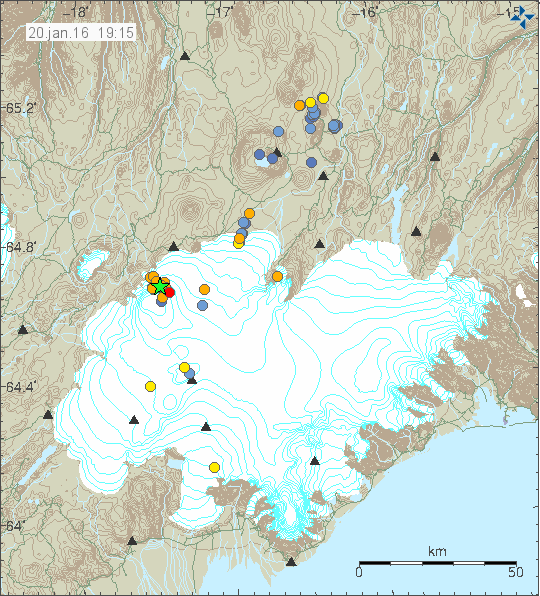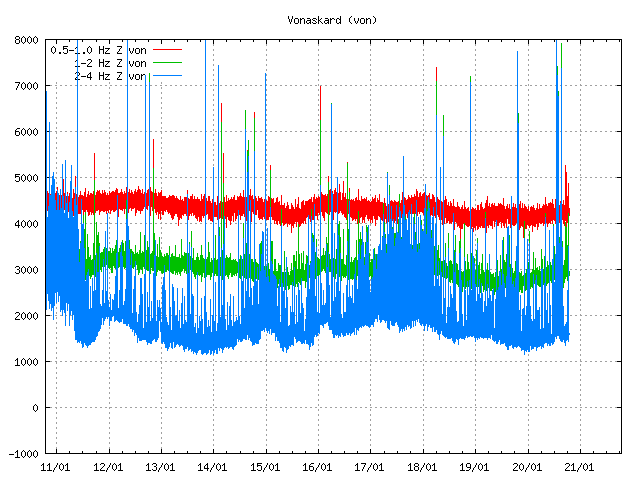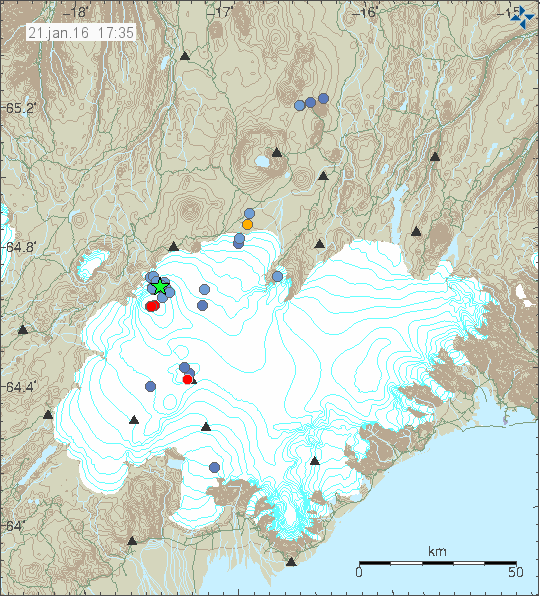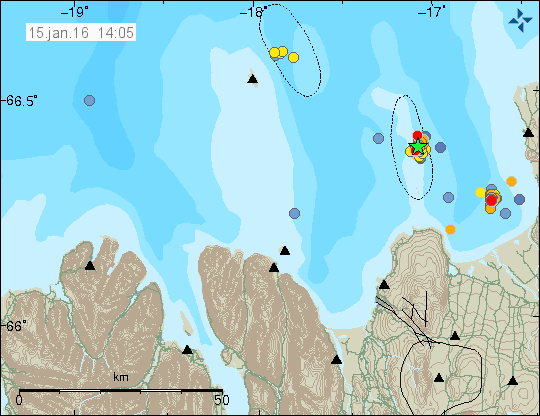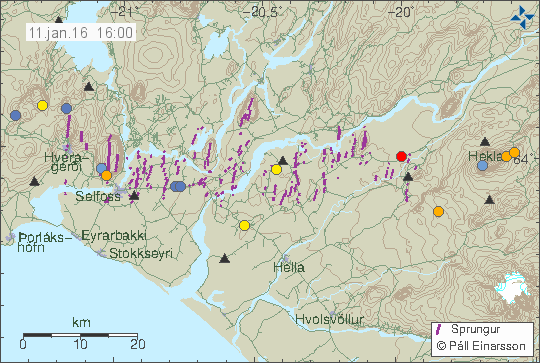Short update on Bárðarbunga volcano.
Bárðarbunga volcano continues to inflate at the depth of 15 – 10 km. Making it hard to observe it on the surface. Earthquake activity continues to increase, with regular earthquake swarms with magnitude of 3,0 – 3,5 at the moment. The reason for this earthquake activity is the inflation currently taking place in Bárðarbunga volcano at depth of 10 – 15 km and at shallower depth. I expect that hydrothermal activity is going to continue to increase in Bárðarbunga volcano for the next few weeks and months as magma pushes up to shallower depths inside the volcano.
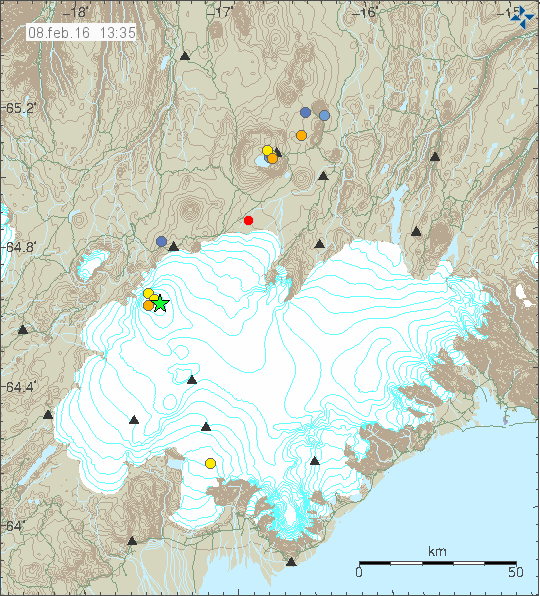
Magnitude 3,1 earthquake (if my memory is correct) in Bárðarbunga volcano on Monday 8-February-2016. Copyright of this image belongs to Iceland Met Office.
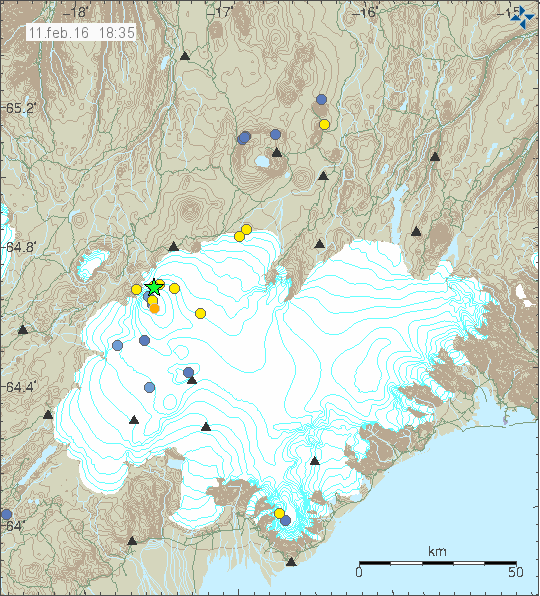
Today (11-February-2016) magnitude 3,3 earthquake in Bárðarbunga volcano. Copyright of this image belongs to Iceland Met Office.
No other changes have been observed in Bárðarbunga volcano. Current pattern of activity in Bárðarbunga volcano is going to continue for a really long time. There is at the moment no need for to write about all of it. Unless something changes in Bárðarbunga volcano. Rift episodes like the one that has started in eastern rift zone in Iceland take a long time, the longest one can go for up to 20 years and they happen slowly most of the time. The biggest risk now is a new dyke intrusion and eruption (or both). That might start without warning and only last for few hours to days at most.
Icelandic News about Bárðarbunga volcano
Hæg atburðarás undir Bárðarbungu (mbl.is, Icelandic) – Attempt Google Translate at own risk. It might bring trolls and elves into existence.
Noise on SIL stations
I did have a conversation about Icelandic Met Office about the strange tremor spikes I’ve been seeing on SIL stations around Bárðarbunga volcano over the past few weeks. It turns out that is connected to 3G (900Mhz) interference. It has two factors in it, the 3G stations loosing signal, creating a dropout in the data stream to Iceland Met Office and what I suspect a signal leak into the hardware that Iceland Met Office has (in the same was as I’m seeing on my Böðvarshólar geophone) when the quality of the 3G signal is poor due to ice and snow on the transmitters antenna, that forces the 3G hardware to boost it’s transmitter power up to 2W. This issue won’t go away until they move to 4G (maybe) or something else.
Other
I’ve decided that I’m first going to move to Denmark and then maybe I’m going to move to Germany. To the village of Andernach. The time frame on this plan is 10 to 15 years at the shortest. I don’t know if this plan is going to happen, it might do so and then it might not do so. I plan on to save up for a house in Germany, the reason for long preparation time is that I need to learn German and learn on the system in Germany. The town I’ve chosen is close to the West Eifel Volcanic Field. This is not the first time I’ve planned to move there (to Koblenz, but that town is too big I think), but those plans are now gone, replaced with this one. I don’t know yet if this plan is going to happen, it might do so in about 10 to 15 years if everything works out.
